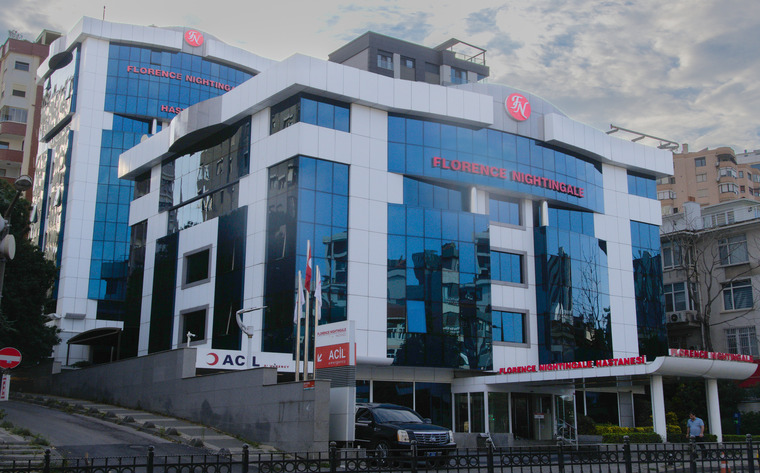
What is a Cancer (Oncology) Center?
Cancer centers are healthcare institutions that specialize in cancer diagnosis and treatment. These centers are places where cancer patients can manage all their processes from diagnosis to treatment under one roof, providing services with a multidisciplinary approach. Doctors, nurses, radiologists and other healthcare professionals experienced in the field of oncology work in cancer centers. Patients are provided with both medical and psychological support in these centers.
About the Cancer Center
Cancer centers are units that are usually affiliated with university hospitals or private health institutions where cancer treatment is applied at the most advanced level. In these centers, specialized treatment methods are applied for different types of cancer. Treatment methods such as radiotherapy, chemotherapy, immunotherapy are offered in a personalized manner according to the patient's condition. In addition, clinical research and studies testing new treatment methods are conducted in cancer centers.
What tests and procedures are performed at the Cancer Center?
In cancer centers, many different tests and procedures are performed during the diagnosis and treatment of cancer. These tests are vital for determining the type, stage and spread of cancer.
Here are some tests and procedures commonly performed in cancer centers:- CT Scan: Computerized tomography (CT) scans are used to produce detailed images of the body's internal structure. CT scans are effective in determining the location and size of tumors and in determining whether cancer has spread to other organs.
- MRI: Magnetic resonance imaging (MRI) uses strong magnetic fields and radio waves to examine the body's soft tissues. MRI is preferred for diagnosing tumors in the brain, spine, joints, and soft tissues.
- Nuclear Scans: Nuclear scans are imaging tests that use radioactive substances to evaluate the function of organs and tissues. These scans are used to evaluate the spread of cancer and the metabolic activity of tumors.
- Bone Scan: Bone scans are done to determine if cancer has spread to the bones. A radioactive substance is injected into the bones to detect abnormalities.
- PET Scan: A positron emission tomography (PET) scan is an advanced imaging technique used to study the metabolic activity of cancer cells. PET scans are often used to evaluate the spread of cancer and to monitor response to treatment.
- Ultrasound: An ultrasound is a test that uses high-frequency sound waves to create images of organs inside the body. Ultrasound is used to detect tumors, especially in organs such as the liver, pancreas, and ovaries.
- X-rays: X-rays are used to image bones and some organs in the body. X-rays are commonly used in cancer centers to diagnose certain types of cancer, such as lung cancer.
- Biopsy: A biopsy is the process of taking a sample of abnormal cells or tissues and examining it under a microscope. In cancer diagnosis, a biopsy is necessary to definitively determine the type of tumor and whether it is malignant.
These tests and applications are the basic steps for correctly identifying cancer and creating an effective treatment plan. Cancer centers plan these tests in the most appropriate way according to the patient's condition and develop individual treatment strategies.
What are the Applications of Interventional Radiology in Cancer Treatment?
Interventional radiology (IR) is a medical specialty that uses minimally invasive methods to target and treat cancer. Interventional radiology offers a variety of procedures to destroy cancerous tissue, shrink tumors, or control the spread of disease.
Here are some interventional radiology applications commonly used in cancer treatment:- Angioplasty (Percutaneous Transluminal Angioplasty): Angioplasty is a procedure used to widen blocked or narrowed arteries and veins. This procedure can be used to open blocked vessels and improve blood flow in cancer patients.
- Stenting: A stent is a mesh tube that is often used to keep narrowed or blocked blood vessels open. Stents are used to maintain blood flow in cases where tumors block blood vessels.
- Angiography: Angiography is an imaging method used to examine the internal structure of blood vessels and organs. In cancer patients, angiography can be used to determine the location and spread of tumors.
- Embolization: Embolization is the process of placing a plug in a blood vessel to stop blood flow or reduce blood flow to a specific area. In cancer treatment, tumors can be shrunk by blocking blood flow to tumors.
- Microwave Ablation: Microwave ablation is a treatment method that uses high-frequency microwave energy to heat cancer cells to destroy them. This method is especially used in the treatment of liver, kidney and lung tumors.
- Cryoablation: Cryoablation is a technique used to destroy cancer cells by freezing them. This method allows tumors to be treated without the need for surgery.
- Biopsy (Biopsies): A biopsy is a procedure used to remove abnormal cells or tissue. Interventional radiology biopsies play a critical role in diagnosing tumors and planning treatment.
- Gastrostomy: Gastrotomy is the process of inserting a feeding tube to provide nutrition to patients. This procedure is performed in cases where tumors passing through the esophagus prevent nutrition.
- Vertebroplasty: Vertebroplasty is the process of injecting cement into vertebrae to strengthen vertebrae that have weakened or collapsed due to cancer. This method is used in the treatment of bone metastases.
- Inferior Vena Cava Filter (IVCF) Placement: An IVCF is a filter that is placed to catch blood clots and prevent pulmonary embolism. In cancer patients, this filter may be used to prevent clot formation.
These interventional radiology applications offer less invasive treatment options for cancer patients that do not require surgical intervention. Each procedure is customized to the patient's condition and the stage of the cancer, resulting in fewer complications and faster recovery during the treatment process.
What are the Applications of Nuclear Medicine in Cancer Treatment?
Nuclear medicine is a field used for both diagnosis and treatment in cancer treatment. Nuclear medicine applications include PET/CT scans and radionuclide treatments. While PET/CT scans are used to detect the spread of cancer in the body, radionuclide treatments target cancer cells with radioactive substances and destroy them. Nuclear medicine treatments are very effective in some types of cancer, especially thyroid cancer, lymphoma and prostate cancer.
What Does the Cancer Treatment Process Include?
The cancer treatment process includes a series of treatment steps planned according to the patient's condition and the stage of cancer after diagnosis. This process is usually carried out with a multidisciplinary approach and may include methods such as chemotherapy, radiotherapy, surgery, and immunotherapy. During the treatment process, the patient's general health status and response to treatment are closely monitored. In addition, psychological support and palliative care services are provided to the patient throughout the treatment process.
What Factors Depend on Success in Cancer Treatment?
Success in cancer treatment depends on a number of factors. These include the type and stage of cancer, the patient's general health, the timing of starting treatment, and the response to treatment. In addition, the experience of the team performing the treatment and the advanced technology used are also important factors that affect success. Early diagnosis and personalized treatment plans are the most important factors that increase the chance of success in cancer treatment.










